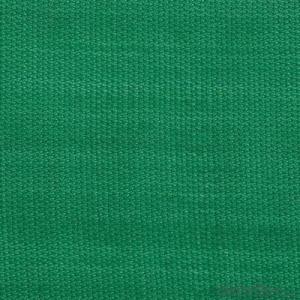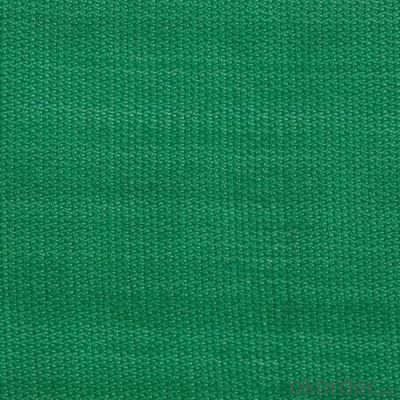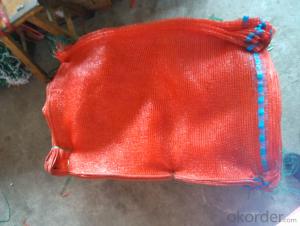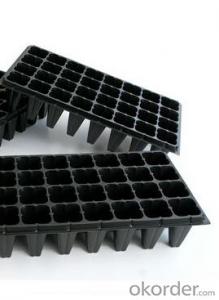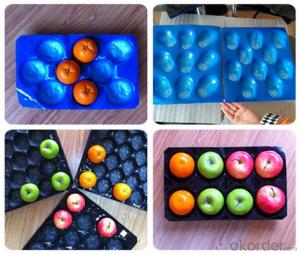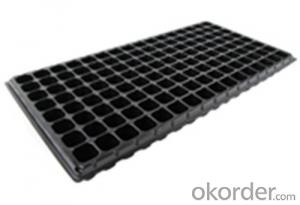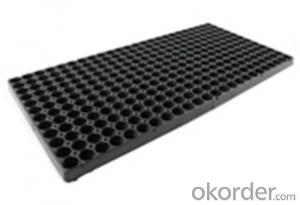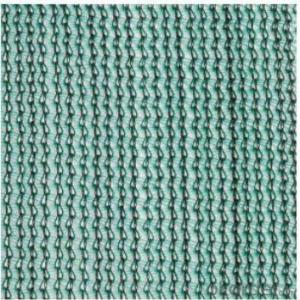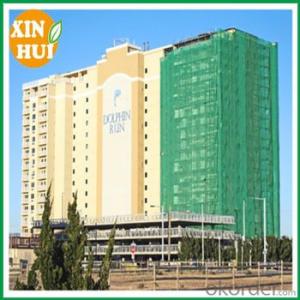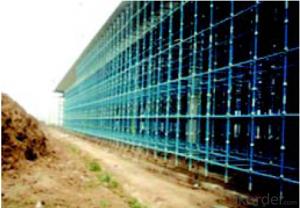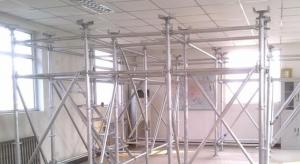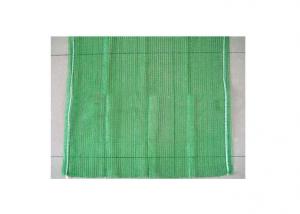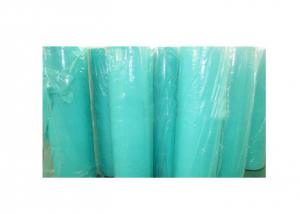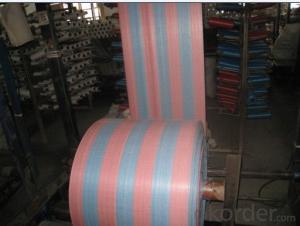Quality Scaffolding Safety Net
- Loading Port:
- China Main Port
- Payment Terms:
- TT OR LC
- Min Order Qty:
- -
- Supply Capability:
- -
OKorder Service Pledge
OKorder Financial Service
You Might Also Like
Quick Details
Type: | Shade Sails & Enclosure Nets | Place of Origin: | Shandong China (Mainland) | | |
Shade rate: | 30%-95% | | | | |
Packaging & Delivery
Packaging Detail: | 1.one roll packed with one strong PP bag with one color label 2.one piece packed with one strong PP bag with one color label;several pieces put in a carton |
Delivery Detail: | 15days after the order |
Specifications
Material:HDPE+UV
Color :Black,Green,Red,Yellow,Blue,etc
Length: As your request
Width: 2~6m
Shade rate: 30%~95%,
Specifications : |
|
Description | 100% HDPE Green Sunshade net |
Material | HDPE(High-density polyethylene) |
Net weight | 50-350gsm (as your request) |
Net width | 6'x20'(1.83mx6.1m),Or other size is available (6meters Max.) |
Rolls Lengths | On request(10m,50m,100m,200m etc.) |
Shade rate | 30%-95% |
Colours | Green,Black ,Yellow,gray...... ( as your request) |
Type | Warp knitted |
U.V. | CIBA( 1-5 year) |
Supply capacity | 5tons per month |
Packing | 1.one roll packed with one strong PP bag. 2.one piece packed with one strong PP bag and several pieces put in a carton. 3.one roll packed with one strong PP bag and several one put in a woven bag. |
Terms of Payment | 1.30% T/T in advance,70%T/T after copy B/L. 2.L/C at sight;L/C 30days;L/C 45days. 3.Western union. |
Deliver time | 30-45 days after the order confirmed or the deposit released |
Function of shading net:
Shade net will Blocks sun &heat, Provides 75% More Shades, Lower temperature, Protect against harmful ultraviolet Rays
Used to provide shade against sunlight and control temperature
Shade net-can also be used-for-greenhouses to protect flowers, trees against frost ,and hail damage It can also used for playhouse ,temporary fencing,
shade fabrics give uniform shading and allow crops to retain more moisture. Our shades can help reduce temperature extremes on plants and slow heat loss at night.
Easy to install with optional accessories if necessary.
- Q: Are there nursery trays with built-in temperature control systems?
- Yes, there are nursery trays available in the market that come with built-in temperature control systems. These trays are designed to provide optimal temperature conditions for plants or seedlings, helping to create an ideal environment for their growth.
- Q: What are the best ground cover plants for attracting butterflies?
- Some of the best ground cover plants for attracting butterflies include butterfly weed (Asclepias tuberosa), creeping phlox (Phlox subulata), purple coneflower (Echinacea purpurea), and creeping thyme (Thymus serpyllum). These plants provide nectar-rich flowers and habitat for butterflies, helping to support their populations.
- Q: This question asks about the methods farmers employ to enhance soil quality using agricultural plastic mulch.
- <p>Farmers use agricultural plastic mulch to improve soil quality in several ways. Firstly, it helps to retain soil moisture by reducing evaporation, which is crucial for plant growth, especially in arid regions. Secondly, mulch can increase soil temperature, which can lead to faster germination and earlier harvests. It also suppresses weed growth, reducing competition for nutrients and water. Additionally, plastic mulch can improve soil structure by preventing compaction and encouraging the activity of earthworms and other beneficial organisms. Lastly, it can reduce soil erosion by protecting the soil surface from wind and water. Overall, the use of plastic mulch can lead to increased crop yields and improved soil health.</p>
- Q: This question asks for methods to ensure the sustainability of agricultural projects when using plastic products.
- <p>To ensure the sustainability of your agricultural projects using agricultural plastic products, follow these guidelines: 1) Choose biodegradable or recyclable plastics to reduce environmental impact. 2) Implement efficient irrigation systems to minimize water waste. 3) Use mulching films to reduce soil erosion and retain moisture. 4) Employ crop rotation and cover cropping to maintain soil fertility. 5) Monitor and reduce plastic waste by recycling or composting. 6) Opt for integrated pest management to minimize chemical use. 7) Educate farm workers on sustainable practices. 8) Regularly assess the environmental impact of your practices and adjust as needed. By integrating these practices, you can enhance the sustainability of your agricultural projects.</p>
- Q: Well obviously the plastics would go after the water cools abit... But anyway. Will it penetrate the plastics? Oh and I said coffee cause I see that some manufacturers use coffee as a scent... In their plastics. Is it actually a good scent? Thanks guys!
- Coffee grounds are IN the plastics... the plastics aren't scented with artificial coffee smell, there are actual coffee grounds in the plastic. Just like people, bass like their caffeine in the morning, so yeah it's a good scent and flavor. Anise scented worms are scented with anise OIL, either in the plastic itself or in the plastic... they aren't boiled with anise seeds. Same with the salt... it's in the plastic... why do you think Senkos are so heavy for a plastic worm? They're loaded with salt! Every company uses a different amount of grains to weigh their worms. Hot water will probably ruin the plastics.
- Q: How do you control ground cover plants that become too aggressive?
- One effective way to control ground cover plants that become too aggressive is through regular maintenance and monitoring. This can include regular pruning, trimming, or mowing to keep their growth in check. Additionally, creating physical barriers, such as edging or installing root barriers, can help prevent their spread into unwanted areas. It is important to promptly remove any unwanted or invasive shoots to prevent further expansion.
- Q: how can i do precepitate silver in plastic
- There's more than one way, but one common method is to use the Brashear process (this is the same process used for silvering glass mirrors, and it is non-electric). A step-by-step set of instructions for the method is found at the first link below. For plastics, it may be necessary to sensitize the surface before trying to deposit the silver. There are a number of ways to do this, and one is discussed at the second link below. See if your library has books on metal finishing. These contain detailed instructions for these processes and much more.
- Q: How do you choose ground cover for a formal garden?
- When choosing ground cover for a formal garden, it is important to consider several factors. Firstly, opt for low-growing plants that will form a dense, uniform carpet-like appearance, as this complements the structured and orderly nature of a formal garden. Additionally, select ground cover that is evergreen or has attractive foliage throughout the year to maintain a polished look. Consider using plants that can be easily shaped or trimmed to maintain clean edges and lines. Lastly, choose ground cover that is well-suited to the specific growing conditions of your garden, such as soil type, sunlight, and moisture levels, to ensure healthy and thriving plants.
- Q: How do nursery trays assist in the propagation of rare and endangered plant species?
- Nursery trays play a crucial role in the propagation of rare and endangered plant species by providing a controlled and optimal environment for their growth and development. These trays allow for the efficient and organized germination of seeds or cuttings, ensuring a higher success rate in establishing new plants. The trays also enable easy monitoring and management of the growing conditions, such as moisture levels and temperature, which are vital for the delicate needs of rare and endangered species. Overall, nursery trays help protect and conserve these plants by supporting their propagation and increasing their chances of survival.
- Q: What types of plastic materials are used in making irrigation channels?
- The types of plastic materials commonly used in making irrigation channels include polyvinyl chloride (PVC), high-density polyethylene (HDPE), and polypropylene (PP).
Send your message to us
Quality Scaffolding Safety Net
- Loading Port:
- China Main Port
- Payment Terms:
- TT OR LC
- Min Order Qty:
- -
- Supply Capability:
- -
OKorder Service Pledge
OKorder Financial Service
Similar products
Hot products
Hot Searches
Related keywords
